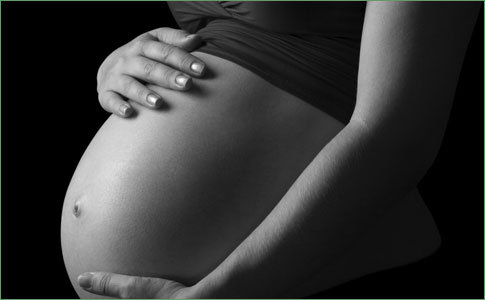Health Centers > Pregnancy Health Center > The skin in pregnancy
The skin in pregnancy
The skin undergoes profound alterations during pregnancy as a result of endocrine, metabolic, and physiological changes. Some of these are trivial and chiefly cosmetic, producing no or minor symptoms, others can be distressing and/or of major medical importance. Pregnancy will profoundly modify expression of pre-existing skin disease and there are dermatoses which are specific to pregnancy: these are described in detail below.
The skin in pregnancy
- Intoduction
- Common Skin Changes in pregnancy
L Vascular changes and lesions
L Pigmentary changes and pigmented lesions
L Hair changes
L Pilosebaceous changes
L Striae
L Cutaneous infections - The Pregnancy Dermatoses
L Pruritus of pregnancy
L Polymorphic eruption of pregnancy
L Prurigo of pregnancy
L Pruritic folliculitis
L Pemphigoid gestationis - Dermatoses in response to pregnancy
- Dermatoses and the effect of pregnancy
L Atopic eczema
L Psoriasis
L Autoimmune dermatoses in pregnancy
Common Skin Changes in pregnancy
Vascular changes and lesions
There is increased skin blood flow during pregnancy and this makes the skin more prone to itch and to oedema, manifest as tightening of rings and shoes. Spider naevi and palmar erythema are common, as are haemangiomas. Pyogenic granuloma may develop: this is a benign tumour with a tendency ulcerate and to bleed, and is sometimes clinically confused with melanoma. It often recurs after local destruction.
Pigmentary changes and pigmented lesions
There is darkening of the nipples, genitalia, and linea alba. The unsightly and sometimes psychologically distressing facial pigmentation of melasma (chloasma) affects many women, is worse with sunlight, and can be reduced by the use of high protection factor (SPF 25) UVB and UVA sun screens.
Pigmented naevi can increase in number, size, and pigmentation. Melanoma may occur and is associated with a poor prognosis in pregnant women. Any rapidly changing, irregularly shaped, or irregularly pigmented mole should be biopsied to exclude a dysplastic naevus or melanoma.
Hair changes
There is diminished shedding of hair, due to prolongation of anagen. This is perceived as thickening of the hair, which increased sebum secretion makes appear more lustrous. The synchronized shedding after parturition gives rise to the distressing postpartum telogen effluvium. Hirsutism may begin or worsen in pregnancy as there is an associated increase in androgens.
Pilosebaceous changes
The increased oestrogens of pregnancy usually improve acne, but there may be worsening of acne in some unfortunate patients, and the entire skin is usually greasier.
The Pregnancy Mask
Sometime during the second trimester you may find yourself gazing at a different face in the mirror. Brownish or yellowish patchy skin changes during pregnancy called chloasma (also dubbed the mask of pregnancy) can appear anywhere on the face, but are seen most commonly on the forehead, upper cheeks, nose and chin. The pregnancy hormones estrogen and progesterone stimulate the melanin cells in the skin to produce more pigment, yet because these cells do not produce extra pigment uniformly, your facial skin may acquire a blotchy tan. (If you have ever taken oral contraceptives, you may already have experienced this particular hormonal side-effect.) Brunettes and darker-skinned women may notice darkened circles, resembling eye shadow, around their eyes. Chloasma cannot be prevented, but you can minimize the intensity of these blotchy, darkened areas by limiting your exposure to ultraviolet light (i.e., sunshine), which further stimulates melanin production.
Hypertensive States of Pregnancy
Hypertensive states in pregnancy include preeclampsia-eclampsia, chronic hypertension (either essential or secondary to renal disease, endocrine disease, or other causes), chronic hypertension with superimposed preeclampsia, and gestational hypertension ...
Striae
Striae on the breasts and abdomen are very common in pregnancy, but do not necessarily relate to either the total weight gain or the rate of weight gain. There is much individual variation.
Cutaneous infections
Candida of the vulva as well as the vagina may occur. Cutaneous and genital warts thrive in pregnancy. Treatment of genital warts is by physical destruction as podophyllin must not be used in pregnancy. Genital herpes simplex infections can pose problems as regards delivery during active infections.
Skin Changes During Pregnancy Include Acne
You probably thought your pimple days were over, but one of the skin changes during pregnancy you can expect is acne. While the acne of pregnancy is rarely as severe as that of adolescence, you may need to return to some of your teenage cleansing rituals. Fortunately, pregnancy is much shorter than adolescence; the bumps and pimples will subside shortly after delivery. Avoid abrasive scrubs or exfoliants; pregnant skin is too sensitive for these. Milder, oatmeal-based facial scrubs (available at nutrition stores) can help unplug the oily pores and are much kinder to sensitive skin. Because of the risk of birth defects, the anti-acne prescription drugs Accutane and Retin-A cannot be used during pregnancy.
Linea Nigra
Many women normally have a faint linea alba (white line) running from their navel to the center of their pubic bone. It is barely visible before pregnancy. (You may not have even known it was there). One of the skin changes during pregnancy that occurs sometime in the second trimester is the a linea alba becomes a linea nigra, a dark line that is much more noticeable. In some women the line extends upward from the navel as well. The linea nigra is darker in darker skinned women and disappears several months after delivery.
Dark Areas Become Darker
Little moles and freckles that existed before may now become bigger, and brown spots or birthmarks become browner from skin changes during pregnancy. New moles may also appear. (Consult your doctor or dermatologist if these moles seem particularly raised, dark, or have irregular borders). The areola and nipples of your breasts will become quite a lot darker; unlike other areas of your skin, which return to their original color after pregnancy, your areola will probably always be somewhat darker than they were before you were pregnant.
Red Palms and Soles
Even as early as the second month of pregnancy, the insides of your hands and the bottoms of your feet may itch and take on a reddish hue, called palmar erythema. The increased color is nothing more than one of the curious skin changes during pregnancy.
Spider Veins
Those much-discussed pregnancy hormones, along with increased blood volume, cause those tiny, squiggly red or purple capillaries just below the surface of the skin to branch out and become more visible during pregnancy. It's also common for spider veins (they resemble a small spider web), to pop out on the face or on the sclera (white part) of the eyeballs during delivery; intense, red-in-the-face pushing can break tiny blood vessels. Known as nevi, these burst vessels can be camouflaged by the appropriate use of make- up. Nevi take longer to disappear than many of the other skin problems of pregnancy, some spider veins on the legs or torso may not go away on their own. A dermatologist can remove them using injections if you feel that's necessary.
Changes to the skin on the breasts
In addition to darker skin on the nipples, the areolas, the circular area surrounding the nipple, often expands during the first trimester. The small bumps on the areolas are actually specialised oil glands, called Montgomery's tubercles, these may protrude more during pregnancy and lactation.
As well as stretch marks on your breasts, you may notice the veins beneath the skin become more obvious. Early in the pregnancy, your body begins to make colostrum, a thick, yellow liquid which the baby is first fed on. Small quantities of colostrum may leak from yours breasts towards the end of the pregnancy.


